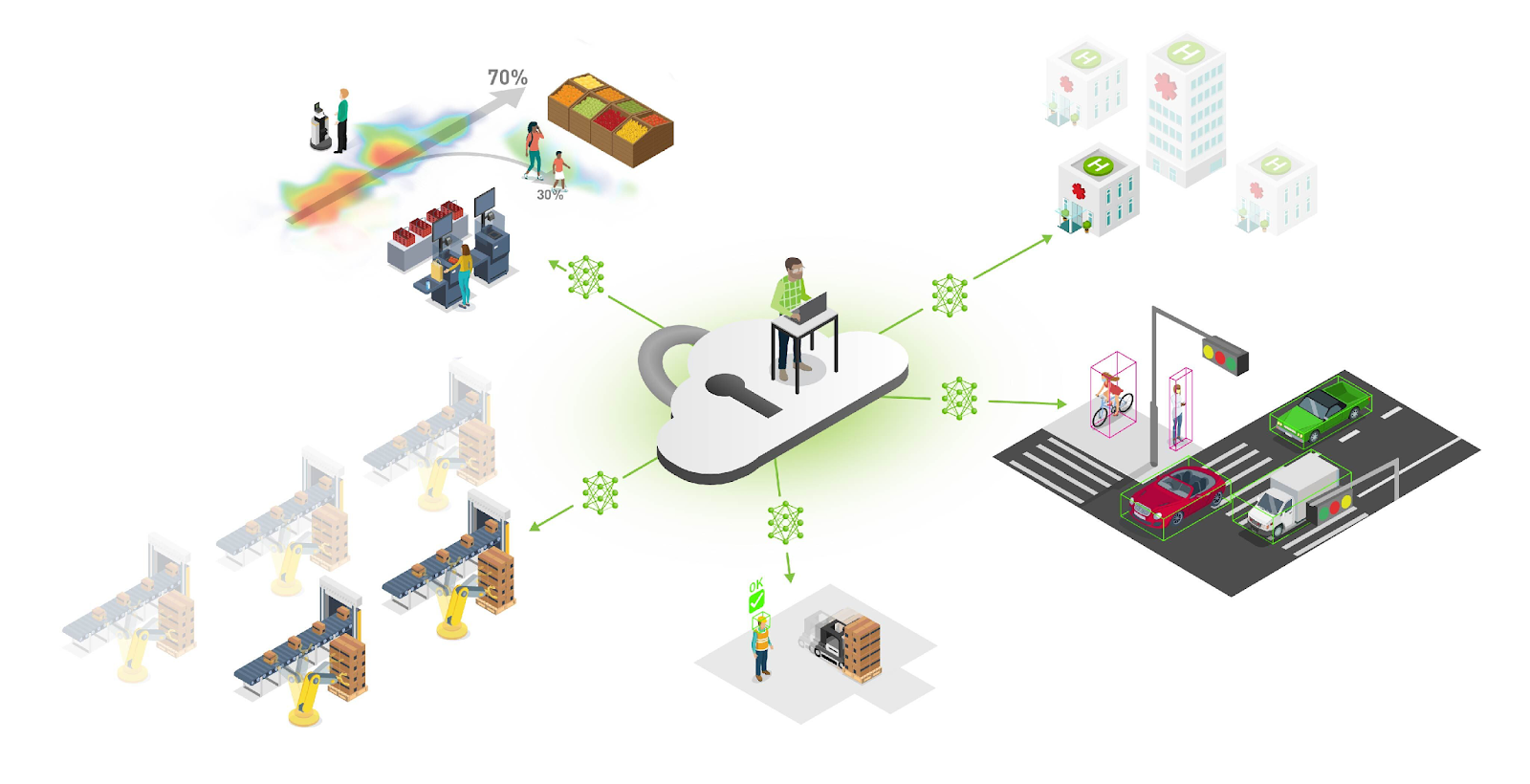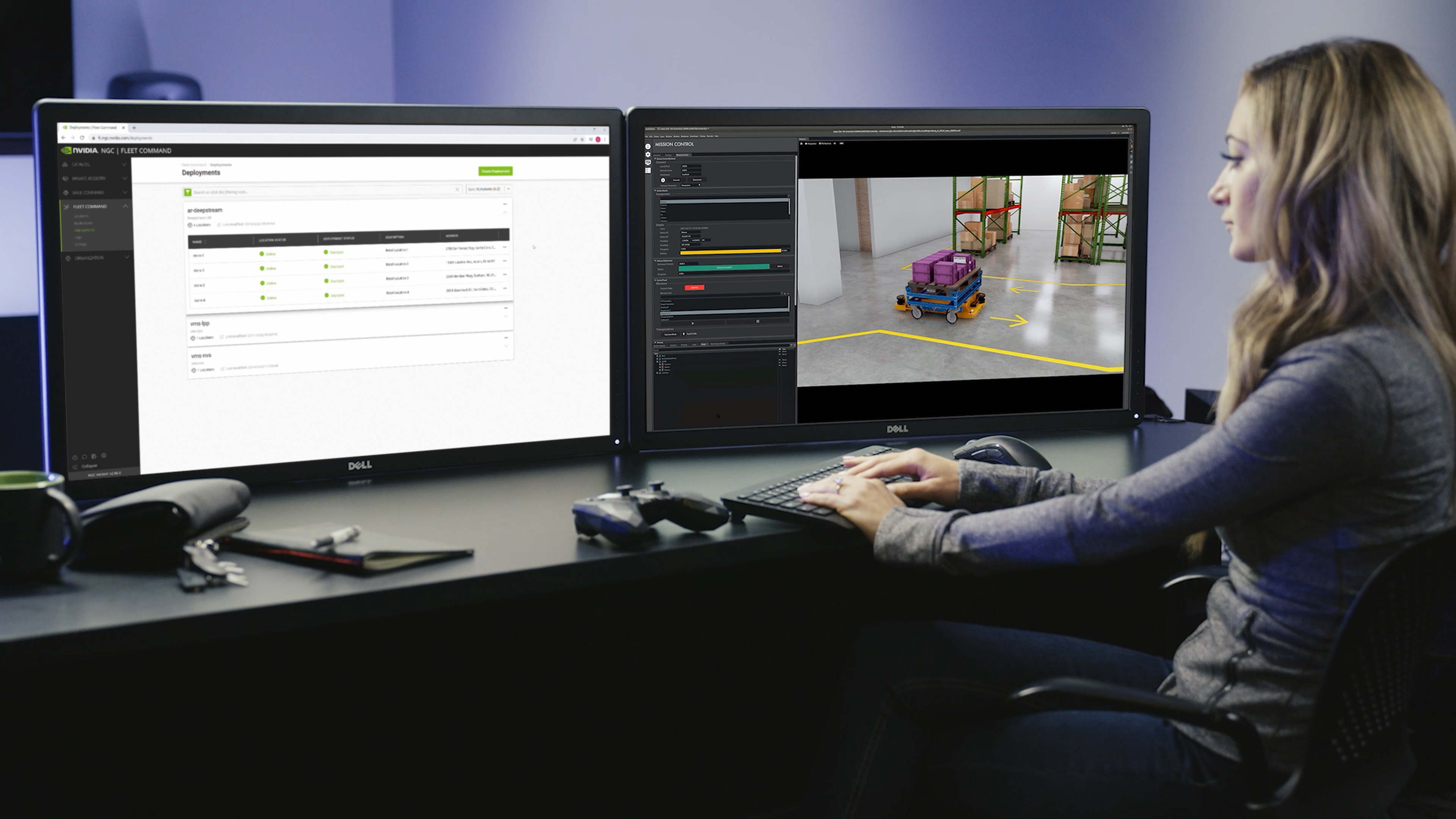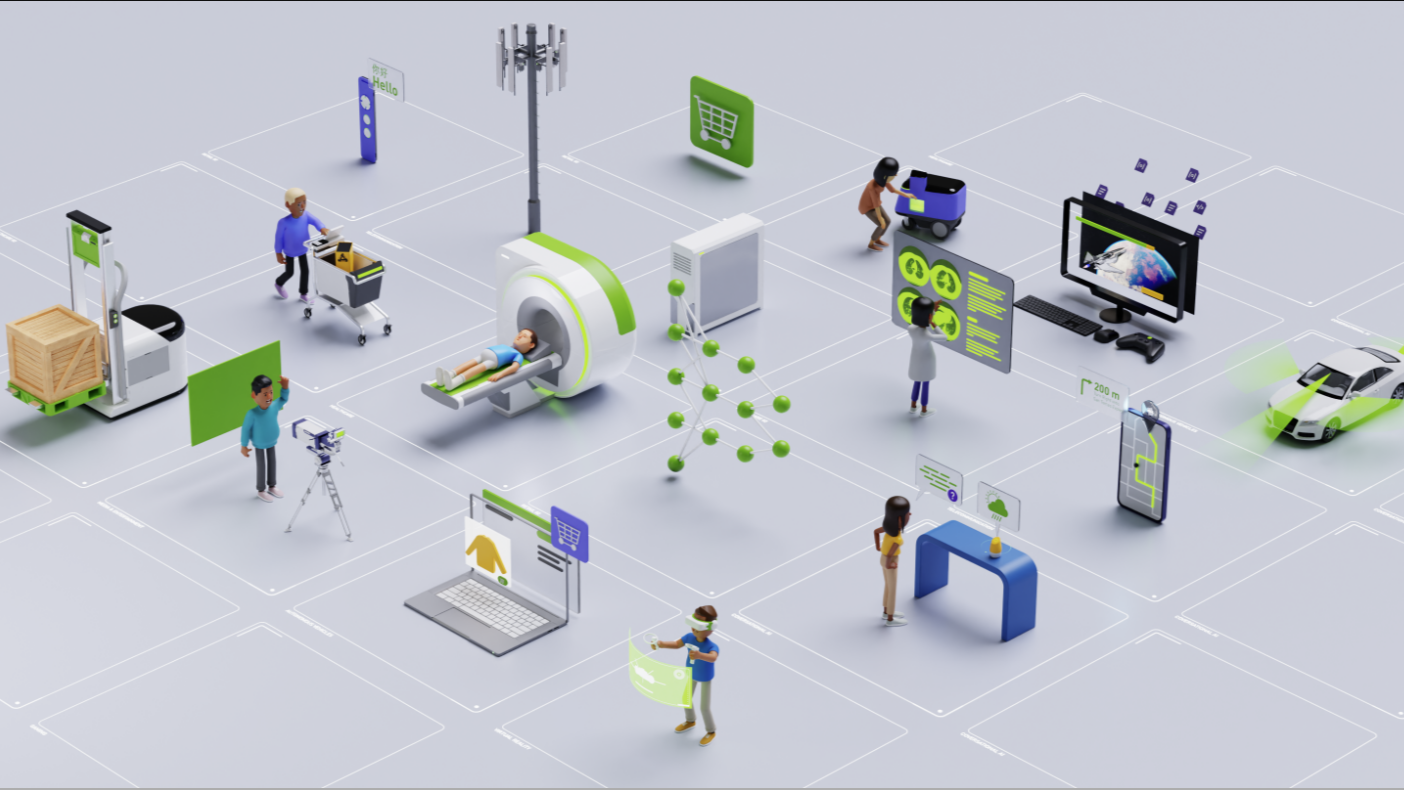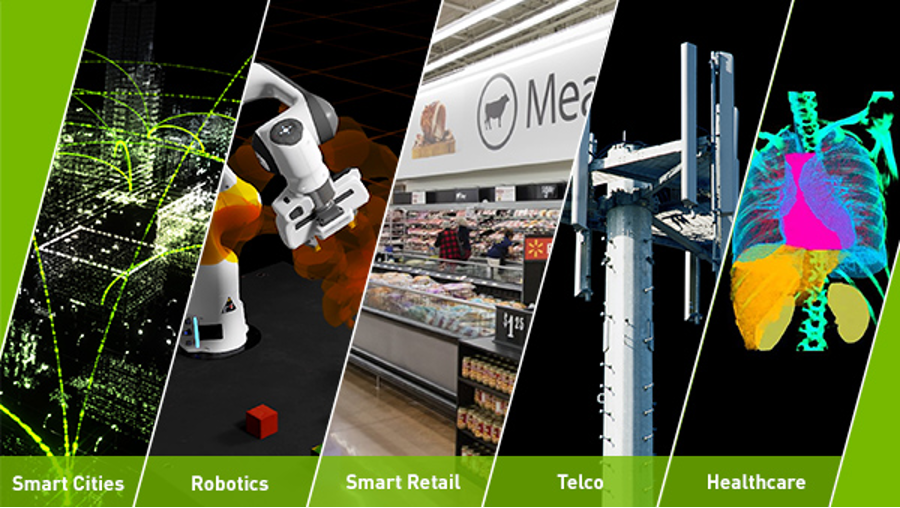Edge computing and edge AI are powering the digital transformation of business processes. But, as a growing field, there are still many questions about what exactly needs to be in an edge management platform.
The benefits of edge computing include low latency for real-time responses, using local area networks for higher bandwidth, and storage at lower costs compared to cloud computing.
However, the distributed nature of edge nodes can make managing edge AI complex and challenging. It can be time-consuming and costly when gathering insights from separate locations, installing hardware, deploying software, and maintaining upgrades at individual nodes.
Centralized management platforms are a critical component of a company’s edge AI solution. This enables organizations to deploy and manage industry applications at the edge, automate management tasks, allocate computing resources, update system software over the air, and monitor locations.
However, the entire stack that makes up an edge AI management solution is complicated, making the question of whether to build or buy an edge management platform exceedingly difficult.
In this post, I break down some of the most important factors to consider when evaluating an AI edge solution for your company.

To get started, consider asking the following questions:
- What is the problem you’re solving? Clarify the requirements needed for your platform and prioritize them. No solution will be perfect.
- What is your budget? Financial resources will inform your approach. Evaluate the cost of using vendor software compared to bringing in resources to your existing team. Management and maintenance costs are also a factor.
- What is your timeline? Are there competitive reasons for you to move quickly? Remember to factor in integration and customization.
Benefits of building or buying
Similar to building a home, when building an edge management platform you are part of the entire process and maintain control of the design. This can be extremely beneficial to an enterprise, especially in terms of customization, data control, and security.
However, buying a solution can be a benefit, especially when it comes to ensuring quality and support from a vendor. Faster time-to-market and lower long-term costs are also significant advantages to buying. In the following, I lay out the top points for either option.
Benefits of building an edge management solution
- Customization
- Data control
- Security risk
Customization
Understanding business needs is paramount to having a proper edge management solution. In doing your due diligence, you may find specific use cases or edge devices that require lots of customization. In this case, you are better off building the platform yourself.
Data control
Maintaining local storage and control of all critical data could be necessary depending on your business. It is important to ask how the third party will use your proprietary data. By building the platform, you ensure complete access and oversight to important data and business insights. If your data is a vital component of your competitive advantage, it becomes imperative to maintain this information internally.
Security risk
Enterprise-level software companies are the targets, and sometimes victims, of large-scale cyber attacks. These attacks compromise all users of their software, potentially leaking vitally important data or opening up pathways into your network. Building the entire platform in-house enables you to add security to places you deem the most important and limit exposure to any breach that a third party may have.
Benefits of buying an edge management solution
- Ensured quality, expertise, and support
- Faster time to market
- Lower cost
Ensured quality, expertise, and support
Enterprise-edge AI management platforms are extremely complex with many layers. A solution provider is incentivized to ensure that the solution meets your needs. They have dedicated expert resources to build an optimal, enterprise-grade solution as well as provide enterprise support for all issues from low level to critical. This means that the platform not only resolves all your current needs but also solves future issues and has a dedicated resource to call upon when needed.
Faster time to market
Buying can help you deploy an edge computing solution faster. Enterprises across the world are working to find the best way to manage all their disparate edge nodes. It would be a competitive disadvantage to wait several months to build a quality solution.
Being an early adopter of edge AI management software can also give you a competitive advantage. You’re able to realize insights from your data in nearly real time and deploy or update new AI applications faster.
Lower cost
Enterprise software often has usage-based pricing, which can lower long-term expenses. Providers are able to spread maintenance and support costs, which is something you are unable to do in-house. Purchasing enterprise-grade software is a capital expenditure as opposed to an operating expense. In the long run, it tends to be cost-effective to purchase.
Risks of building or buying
There are also downsides to consider. There is some assumed risk with building your own solution. These risks—specifically around quality, opportunity cost, and support—can hinder development and slow down business growth.
But, nothing comes without risk, and buying a solution is no exception. These can be summarized into three main buckets: potential data leaks; a solution that doesn’t meet your needs; and trusting someone else to do the job. In the following section, I examine risks in detail.
Risks of building an edge management solution
- Quality compromise
- Technical debt
- Opportunity cost
Quality compromise
A proper and complete solution must deploy AI workloads at scale, have layered security, and orchestrate containers, among other things. There is a tremendous amount of detail required to have a complete edge management platform. While this may seem simple to create, the many layers of complex software below the user interface could require an outside expert to solve your problem.
Technical debt
Another option is to extend your current solution to support edge computing and AI but that often brings more trouble than benefit. It could be costly, with additional licensing costs, and may not encompass all the benefits and features needed. A loop of continual repairs rather than rip and replace is not only costly but also time-consuming, leaving you with a platform that does not perform as needed.
Opportunity cost
Even in cases that do not require bringing in outside developers, the existing team may be of better value in building unique and custom AI applications for use cases rather than the platform. A solution provider can also offer expertise in edge computing and management, saving you time bringing the solution to market while meeting your all requirements.
Risks of buying an edge management solution
- Long-term support
- Access to private data
- Unmet requirements
- Market changes
Long-term support
By building your own solution, you also take on the cost of maintenance and support. Those costs rise as more applications and users come onto the platform. This can strain your IT personnel and end-users, while also growing operating expenses and lowering your net income.
Access to private data
The solution provider becomes a responsible owner for several components of the edge compute stack and could have access to some edge data. If there is data vital to your company’s competitive advantage, this is a risk you must consider.
Unmet requirements
The vendor’s solution may not meet the exact needs of your organization. You may have a niche or unique need that off-the-shelf products cannot solve. These could include specific connectivity, firewall, or provisioning issues limiting your ability to use a service provider.
Market changes
Using a third party could leave you vulnerable to any changes that the third party makes on their own. They could decide to leave the market or may struggle with market shifts leaving you exposed and without a trusted partner.
Choosing the right edge management solution
A lot goes into a quality edge AI management platform. While you still may be thinking through the best option, one approach to consider is a hybrid model; where you buy the primary solution but build out customizations for your organization’s needs.
This is only possible if the provider’s solution has APIs for integration. Be sure to ask if integration into other management tools and the wider ecosystem is possible. Also, when performing due diligence ask about local app data storage on-premises to minimize any data concerns.
The most important thing is to understand the capabilities of both the vendor and your own organization. Work closely with the vendor, ask for demos, ask questions about the flexibility of the pricing structure, and ensure it is a collaborative effort between all parties that are involved.
NVIDIA works with many customers who have chosen to build their own edge solutions and also offers the edge management platform NVIDIA Fleet Command. Fleet Command is a cloud service that enables the management of distributed edge computing environments at scale.
Get started on your edge management journey with a free trial of Fleet Command on NVIDIA LaunchPad.










